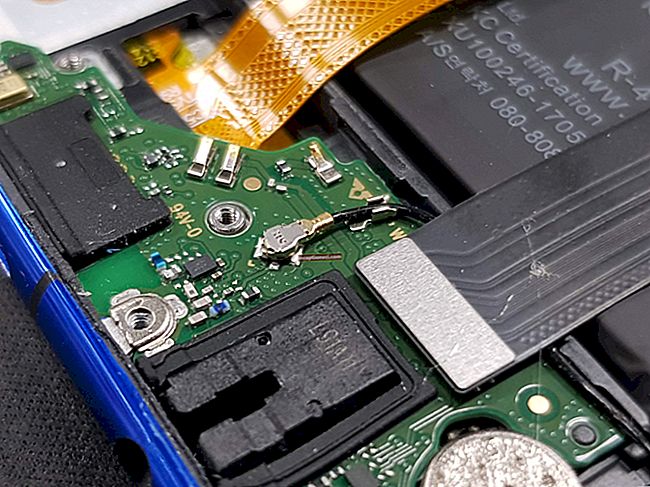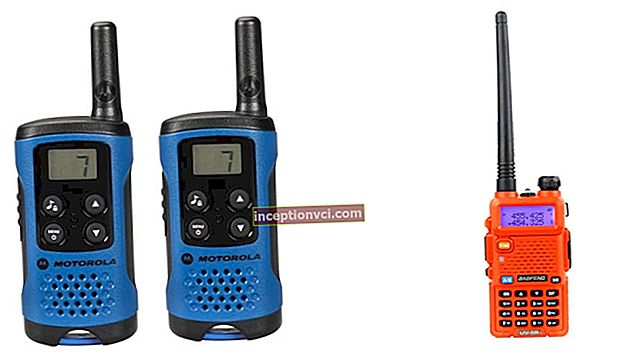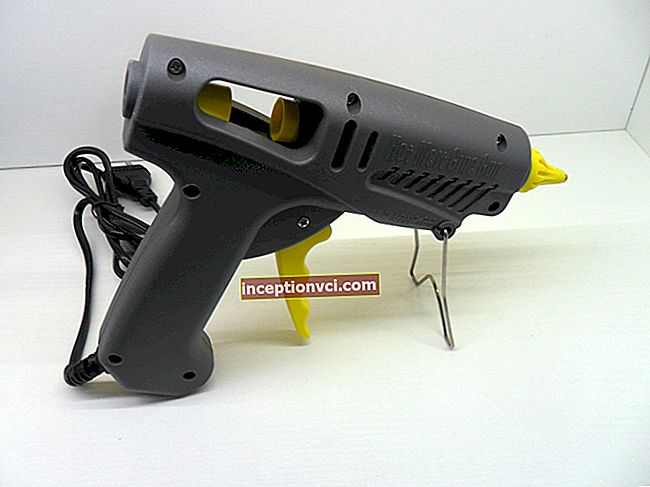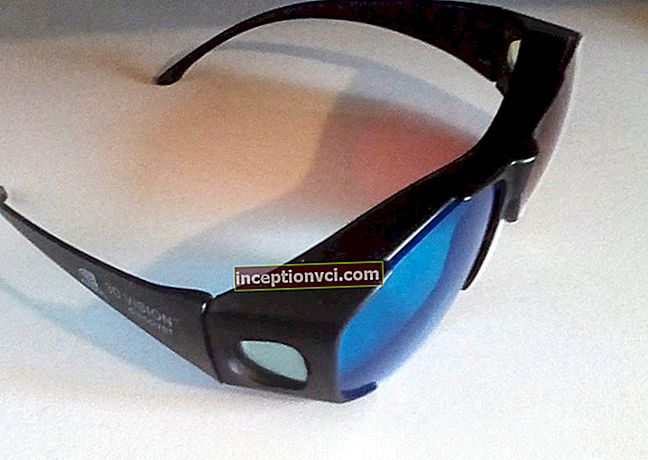Every user needs a quality monitor to take full advantage of the computer's capabilities. But before purchasing the most suitable model, you should evaluate the following factors: which applications will be used more often than others, how much space is available on the table, what diagonal size is most convenient to use, and of course the amount of money that can be spent on the purchase.
Most modern monitors use LCD technology and are entry-level models that combine low cost with acceptable performance. Such models are suitable for Web, e - mail, and other office applications. Often they offer a fairly convenient setting of the main parameters. More expensive models transmit a high-quality image, and also have additional adjustments not only to display parameters, but also allow you to change the height and angle of the screen.
CRT or LCD

For a long time, experienced users who worked a lot with graphic images preferred conventional CRT monitors. This was due to their ability to support a wide range of resolutions and natural colors. Nowadays, most of these users have switched to high quality LCD monitors that offer the same image quality as CRT models, but use significantly less power. The development of color calibration technology and the emergence of special applications have allowed specialists working with computer graphics to switch to flat panels. In the future, this transition can be made even easier, given the gradual improvements in color reproduction of LCD screens. Users who work a lot with text also prefer LCDs. Monitors of this type have pixels with sharp edges, making it easier to focus on the letters.
Unlike CRT monitors, LCD models do not flash. Whereas a CRT screen is constantly updating the image, an LCD has a constant light that shines through the screen. LCD monitor lifespan may vary depending on manufacturer, but generally it is around 50,000 hours. Also, unlike CRT monitors, LCD models are subject to pixel burnout. When such a pixel is present on the screen, then it constantly glows in white or black. Different manufacturers have specific terms and conditions to replace monitors when these pixels appear. So it is better to clarify the conditions for resolving such cases before purchasing a particular model.
Currently, buyers can find several models of CRT monitors. Since the price of LCD panels is noticeably lower, especially with a large diagonal, most companies are gradually switching to such models. An important factor in this case is also lower power consumption.
There are the following main technologies used in LCD screens: twisted nematic (TN), vertical alignment (VA), and in - plane switching (IPS). Many models of inexpensive monitors use TN panels. This is not surprising. These panels are less expensive to manufacture than other LCD technologies. The main advantage of TN panels is their speed of operation and low cost. Among the shortcomings, it should be noted not very large viewing angles, and not the most accurate color reproduction.
VA technology offers improved viewing angles compared to TN panels, better color reproduction and often more brightness. At the same time, VA panels do not have such a fast response time as TN ones.
IPS monitors are usually the most expensive. They offer better viewing angles and crisp colors. But IPS is the slowest in terms of response time.
Backlight

More LCD monitors using LED backlighting are gradually emerging. There are the following options for this type of screen backlight.
Small WLEDs are located around the edges of the screen. With the use of a special diffuser, the light is evenly distributed over the surface of the screen. There is also an improved version of this technology, when the diodes are placed on only one side of the display. WLED is the most inexpensive and compact backlighting method. This explains its widespread use in displays of various devices.
The next option uses RGB LED. Instead of using WLEDs placed at the edge of the screen, RGB LEDs are evenly distributed across the screen surface. Each such diode can display three primary colors. This gives the display the ability to deliver a sharper and richer image than WLED-based screens.
Another method of LED backlighting combines the features of previous technologies. In this case, the WLED diodes are distributed over the surface of the screen as in the case of RGB LEDs. But instead of three colors, only standard backlighting is provided.
Advantages of LED backlighting over conventional CCFL technology

Monitors with LED backlighting have the best picture clarity and color reproduction. But in this case, it refers more to RGB LED technology. Since using WLED diodes, the number of displayed colors is approximately the same as CCFL technology.
LED screens are much thinner. This is only true for WLEDs, which are the most commonly used lighting method. They represent an acceptable ratio of cost and performance. RGB LED panels have incredible color rendering, but they are expensive and larger in size. Displays with WLED technology do not add much to the picture quality compared to CCFL, but they do allow monitors to be made less than one inch thick.
The LED requires less electricity. Indeed, screens with this technology are characterized by low power consumption. But also this parameter depends on the diagonal of the monitor.
What is the most suitable LCD panel?

TN
+ Low cost
+ Fastest response time
- Not the most accurate color reproduction
- Small viewing angles
VA
+ Good viewing angles
+ Rich colors
+ Relatively low price
- Relatively slow response time
IPS
+ Excellent response time
+ High level of color rendering
+ Wide viewing angles
- High price
To buy the most suitable monitor, it is best to first estimate how you intend to use it. And in accordance with this, choose this or that technology.
Main characteristics

Natural Resolution: Since LCD screens use a certain number of pixels to form an image, they have a consistent natural resolution at which the highest definition is possible. Most of the 17 in, 18 in and 19 in models have a resolution of 1280 x 1024. Other diagonals have a corresponding natural resolution. If the user enables a lower resolution, for example to display larger icons and text, the image may not be clear enough. This is due to the fact that in this case, the display uses only a part of the available pixels to form an image, which, in addition, also increases to fill the screen. Before buying a model you like, it is better to reliably assess how well it works, and what natural resolution is offered to users.
Aspect ratio: Many modern LCD monitors have a 16:10 wide aspect ratio. This size is useful when working with applications containing many toolbars and pallets. Navigating the network or working with documents can also be more comfortable, since two windows can be placed on the screen at the same time.Also, this size is suitable for displaying various wide-format content.
Diagonal: Screen size is measured diagonally. Therefore, the area of a widescreen monitor is often smaller than a model with a regular aspect ratio, with the same diagonal. With regard to CRT monitors, it should be said that the diagonal indicated in the characteristics refers to the size of the kinescope. Whereas the really visible screen is somewhat smaller, since part of it is covered by the plastic of the case. Models with LCD technology have a true diagonal, which fully corresponds to the specified in the technical specifications.
Viewing angles: This parameter is measured in degrees. In relation to LCD monitors, viewing angles characterize how much you can move to the sides of the display before the image cannot be read out. The magnitude of the viewing angles is an important parameter for a monitor with any diagonal. The best way to gauge viewing angles is to personally look at the monitor while it is running. The larger the monitor size, the more important wide viewing angles are.
Contrast: This term describes the difference between the brightest and darkest shades that the monitor can display. It is necessary to select models with a value of this indicator of 400: 1 or more.
Brightness: This parameter shows the greatest amount of light flux that comes from the screen. Monitor manufacturers often set this parameter to the highest value in order to impress buyers. High brightness can be handy for videos and images, but it is also not very suitable for continuous use, especially when displaying text on the screen. Many monitor models have this parameter adjustment to achieve the best performance with your favorite type of content.
Digital or analog: Users with modern computers are likely to prefer an LCD monitor with a DVI (Digital Video Interface) connector. In this case, the image is not converted from analog to digital and vice versa, so it is clearer. Digital input is the most common one nowadays. Only the most budget models of monitors have only a VGA (Video Graphics Array) connector. There are the following types of digital connectors found on LCD monitors: DVI - I and DVI - D. DVI - I can carry digital and analog signals. To connect to the VGA input on a computer, you need to use a special adapter. DVI-D is a digital port only.
HDMI : This type of connector is used to connect the display to various devices with high definition resolution. HDMI connections are becoming almost standard on large screens.
Response time: This characteristic means the time it takes to change a pixel, measured in milliseconds. In theory, the faster a monitor has a response time, the less noise it has when displaying fast moving objects. There are several ways to measure this parameter. Therefore, buyers should keep in mind that this parameter can be calculated differently for several models.
Memory card slot: Several models of monitors have a card reader built into the case. This is a useful option that allows, for example, to view images without turning on the computer.
Audio: Some monitors offer audio functionality. They can have a headphone input, volume control and built-in speakers. But when considering such models, it should be borne in mind that often they use components that are not of the highest technical characteristics.
The size: When choosing the size, you should remember the area of the workplace where the monitor is supposed to be placed. A large screen can look impressive, but you need to make sure it can be viewed from a comfortable distance.As in the case of TV panels, the most suitable distance is at least twice the diagonal of the screen.
Ergonomics: Almost all monitors have screen position adjustments. For users who spend a lot of time at the computer, a convenient addition can be the height adjustment of the monitor. In this case, some of the amount spent can reduce the strain on the neck muscles. Well, those who work with large or long documents may need the ability to rotate the screen to portrait mode.
General recommendations

Like many other devices connected to a computer, monitors have many different characteristics. By itself, the price or the specifications separately do not determine what kind of model it is. The most important parameter for most users is the image quality. The following is a brief summary of the main features to look out for when buying a monitor. The image looks best when displayed at the natural resolution of the LCD monitor. You can enable a lower screen resolution, but in this case, the clarity is reduced. Some monitor models perform better than others with non-native resolutions enabled. Unlike CRT screens, monitors with LCD technology have such a visible diagonal, which is indicated in the technical specifications. Height adjustment allows you to position the monitor at a comfortable level for work. The rotating screen is useful when working with large applications. The value of contrast helps determine how saturated the color rendition of the image displayed on the screen will be. The higher the contrast, the better. Large viewing angles allow convenient use of the monitor. As with some other parameters, different manufacturers use different methods for calculating this indicator. So it is better, before purchasing a model you like, to look at a working monitor from different viewing angles. Before buying a monitor, you need to make sure that it has enough usable area. It should be remembered that the visible part of a widescreen display is slightly smaller than that of a standard monitor, with the same diagonal. You should also assess the need for built-in speakers, they may not offer the highest sound quality, but can help free up some space near the monitor.









